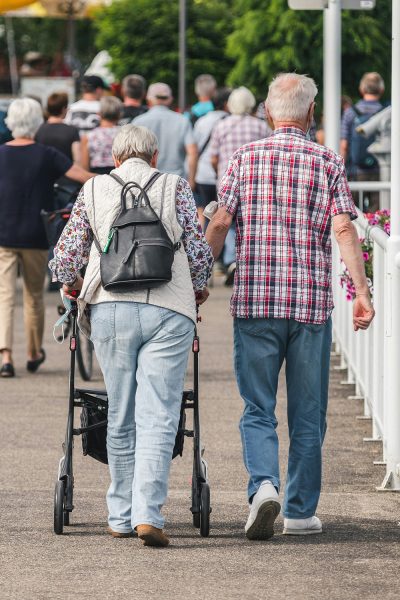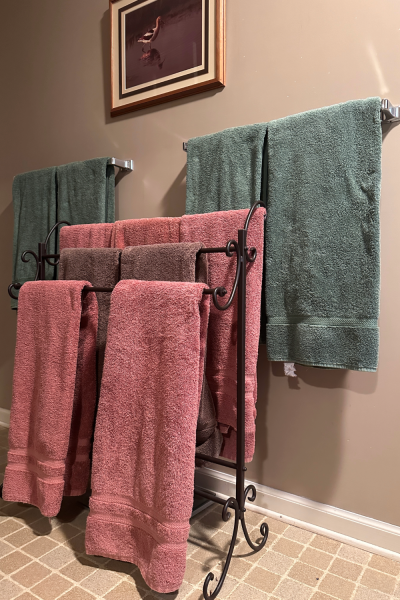Activities of daily living…. what does that mean? Often the in-home, family caregiver wakes up one day as a caregiver; no warning, no training, maybe a few minutes of teaching in hospital discharge instructions at best.
So, what is the job of caregiver? Where do we start?

The most basic necessities of caregiving can be broken down into activities of daily living.
By the end of this post you will have a complete guide to make sure you are able to provide all the activities of daily living.
Ambulating:
This activity of daily living can be defined as how well the patient can move. There are many levels of ambulation, so first let us figure out at what level we are working. The different levels are independent, independent with assistive device, stand by assistance, weight bearing assistance, one-person transfer, two-person transfer, bed bound or transfer with lift only:
Independent:
The patient is strong enough to walk steady and get around current living situation with minimal risk of falling. In other words, if the house is multi-level they are able to navigate the different levels with steps or ramps. This patient may or may not be independent outside on uneven ground, this also needs to be evaluated.
This patient’s mental state has a profound effect on the level of care they need. A cognitive patient that ambulates independently can get around the house with no problem, can probably be left alone at home for periods of time allowing the caregiver more flexibility. However, if this patient has mental deficits such as dementia, they can be a flight risk and dangerous to themselves if left alone. You run the risk that they could get into something toxic in the home or get lost.

Independent with assistive device:
This is very similar to the independent level. Wheel chairs, walkers, rollators, knee walkers are all awesome for maximizing mobility. Once the patient is used to using the device they can be just as mobile as the Independent ambulator.

Stand by assistance:
This patient is just a little unsteady. They may need a hand to steady themselves from time to time.

Weight bearing assistance:
This patient can’t hold their own weight. So, you don’t need to be walking more than a step or 2. You might be doing this to help the patient gain strength if they are in recovery mode. Depending on the patient’s size you may need 2 caregivers assisting for both your and the patient’s wellbeing.
One person and two-person transfer:
Depending on the patient’s weight and strength, this patient is just pivoting from bed to wheel chair, wheelchair to chair, wheelchair to shower, etc. A slide board or transfer board can be very helpful but be sure to get training from physical therapist or occupational therapist on how to use it.
Bed bound and transfer with lift only:
This patient may be bariatric or have skin that is too frail to transfer manually, or maybe you just need to save your back (it’s the only one you have). So do not hesitate to ask your doctor, physical therapist, occupational therapist or medical supplier about getting a lift, you will just need to be trained on how to use it safely.
Bed bound patients need to be turned, rotating from side to back to side at least every 2 hours.
Warning!!!
Weight bearing assistance, transferring patients, and assisting bed bound patients in turning can be very hard on your body as the caregiver and can cause injury to you as well as the loved one you are caring for if not done properly. You need training on proper body mechanics for you and proper body alignment for your loved one. Physical therapists are the best in this area, but occupational therapists and nurses are trained in this as well. Please seek professional training if at all possible.
Eating:
Eating is an essential part of our activities of daily living. Two main things need to be evaluated here. The patient’s ability to get food in their mouth and the ability to chew and swallow it once it gets there.

Independent:
This patient has the ability to prepare food and eat all on their own. Your only assistance here may be grocery shopping and some heavy lifting, if needed.
Preparation Assistance:
In this case the patient needs meals prepared for them, but is able to fix their own plate and eat without any help.
Stand by Assistance:
If choking is high risk or if a patient needs varying degrees of help depending on how they feel that day they may just need someone present in case an issue arises.
Set-up Assistance:
In this instance a patient needs their plate prepared for them and their utensils set out. If vision is impaired describe the food on the plate clock wise. For example, at 12 o’clock is your meat loaf, at 3 o’clock your mashed potatoes, at 6 o’clock your peas and 9 o’clock your carrots.
Verbal Ques:
Verbal ques depend on the patient, and require the most patience. The patient may just need encouragement…finish your peas…would you like to take a drink? But others may require more specific instructions… pick up your spoon…get some peas… chew…swallow before you take another bite…ok now get another bite…repeat. Sometimes it seems easier to just pick up the spoon yourself as the caregiver. But be patient. It gives your loved one even just a little bit of autonomy. It allows them to choose which food they put on their spoon next and it exercises their arms that would otherwise be sedentary.
I once had a patient that would sit at the table, look at the food, and say, “What do I do? What do I do? What do I do?”. I would walk her through the steps and she would say, “How do I chew? How do I chew? How do I chew?”. We went through this process every bite until dessert came out. She would start eating without any ques and asking for seconds. Sometimes they really don’t know how and sometimes they just don’t like the food. We just have to feel our way through and try to figure it out.
Total Assistance:
Be sure when you are assisting with each spoonful that you let the patient know what is on it. This sounds like, “Would you like some peas? More peas? Want some meatloaf now or to finish the peas?” (no answer) “Ok, let’s try a bite of meat loaf, do you like it?” (look for any sign of pleasure or disgust). Continue in this manor according to the small ques the patient gives you. They may be as small as spitting something out vs eating it.
Personal hygiene:
Personal hygiene is one of the first things we do when we wake up in the morning and then multiple times throughout the day making it part of the essential activities of daily living. Again, we see the different levels of care; independent, stand by assistance, set up help only, verbal ques, total assistance.
Washing hands:
Encourage or assist in hand washing every time the patient uses the toilet, before they eat, and anytime they come in contact with something dirty or potentially germy. Just like we should do for ourselves. Wet wipes can be a hack when mobility is an issue.
Face washing:
Often elderly skin is fragile and can’t tolerate soap, it’s ok to just use water or only spot clean until bath time. Lotion is an important component often forgotten as well.
Brushing and styling hair:
Daily brushing of hair is very important, but styling hair goes a long way towards self-confidence, and self-respect in a situation where so much is being stripped away. Whenever possible style the patient’s hair as closely as they would themselves. You are likely to get a smile, and don’t forget makeup if it applies to the situation.

Brushing teeth:
Daily oral care is essential whether you are brushing teeth or applying dentures. Always rinse dentures with cold water, hot water can damage them.
Dressing:
When dressing patients always communicate with the patient about their preferences. If the patient has a weakness start dressing on that side. For example, if the patient has reduced mobility in one arm start by putting that sleeve on first, then the head, followed by the most mobile arm.
Bathing:
Showering creates an extra fall risk because of wet slippery surfaces. Syncope (passing out) is at a higher risk as well because often hot showers lower our blood pressure. Have you ever felt a little dizzy in the shower or maybe even “blacked out” a little? I know I have. Because of these risks, showering is one of the most needed areas of assistance. Many otherwise independent patients need stand by assistance during a shower. In this situation, I stand right outside the shower just waiting to be called on or to offer a hand to steady someone. For more information on showering check out the post labeled “Bath Battles,” where I go into a lot of detail.
Toileting:
Toileting can be broken down into the ability to get to and from the toilet that I discussed in ambulating, whether or not the patient can use it appropriately or tell when they need to, then does the patient have the physical and mental ability to clean themselves properly.
Continence is the term often used by medical staff to describe a patient’s ability to control bladder and bowel function. If a patient is continent, they have control; if a patient is incontinent, they do not. This can be so very frustrating, and you may think of it as the grossest part of caregiving.
Now I want everyone to do an exercise today. Go get a pudding cup, empty the cup into a Ziplock bag, making sure it is sealed properly. Now I want you to sit on that Ziplock bag for 5 minutes (that’s what institutions require for call light response time). Think about what it feels like, about how long 5 minutes really is, the flood of feelings the patient may feel about having the “accident,” having to call for help, not being able to do it themselves, etc. Now treat your loved one with the empathy and compassion that has grown inside you from this little exercise.
I don’t doubt you already have a world of compassion, because you are reading this blog to learn how to be the best caregiver you can be. But I know I had a world of compassion before I tried this exercise 15+ years ago, and it is still impacts me every day. So, I hope you will give it a try.
How to clean an incontinent patient:
Front to back is very important especially in female patients to avoid urinary tract infections. Retracting the foreskin cleaning and putting the foreskin back in place is essential on uncircumcised men. I highly recommend you ask a nurse or doctor about how to give proper care on your specific loved one male or female, especially if the patient you are caring for is the opposite gender as you.
Wipes are really popular and great for easy disposal. I recommend throwing them in the trash rather than flushing them. TENA is my favorite line of products. If you use bath cloths rather than wipes, TENA cream is excellent.

